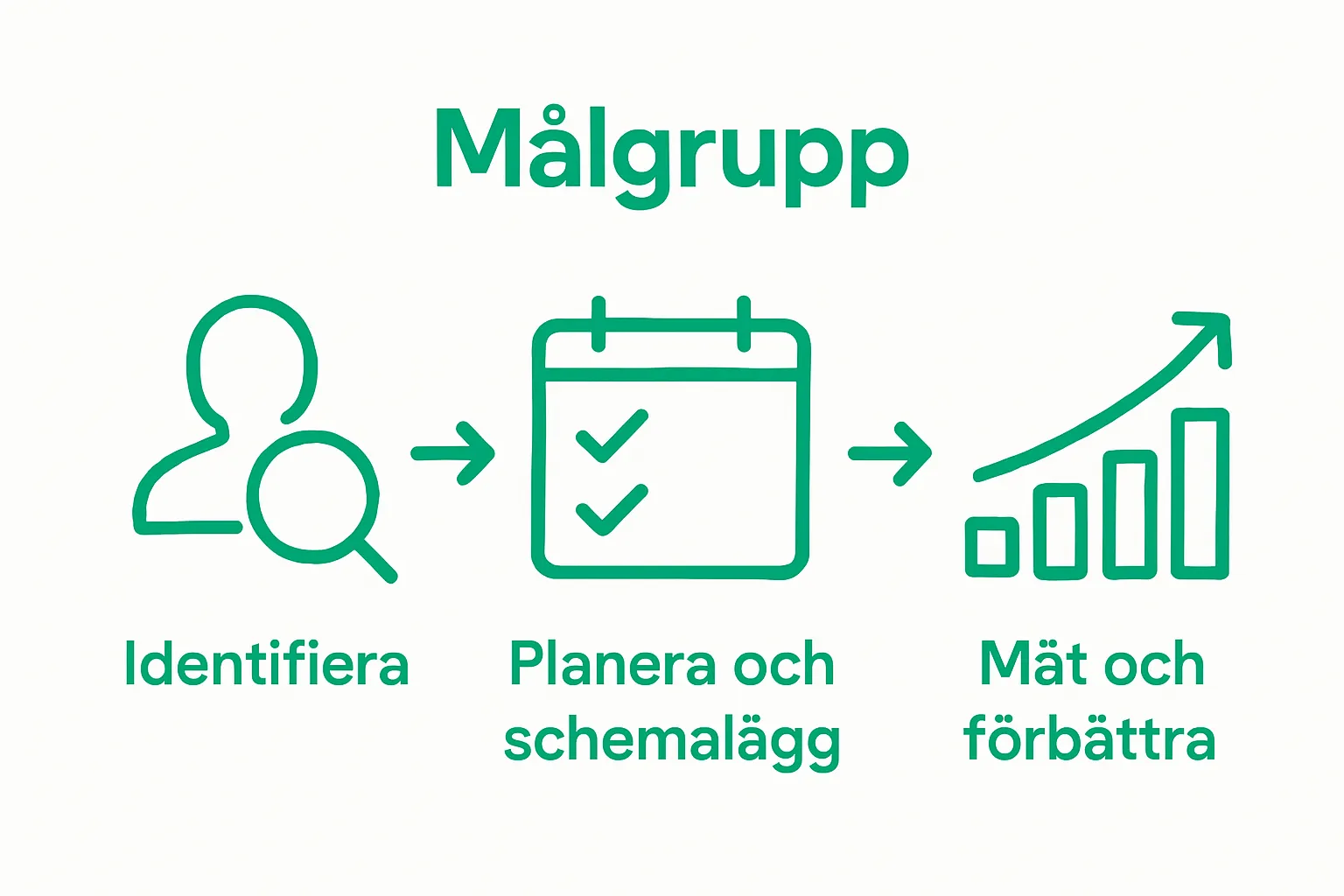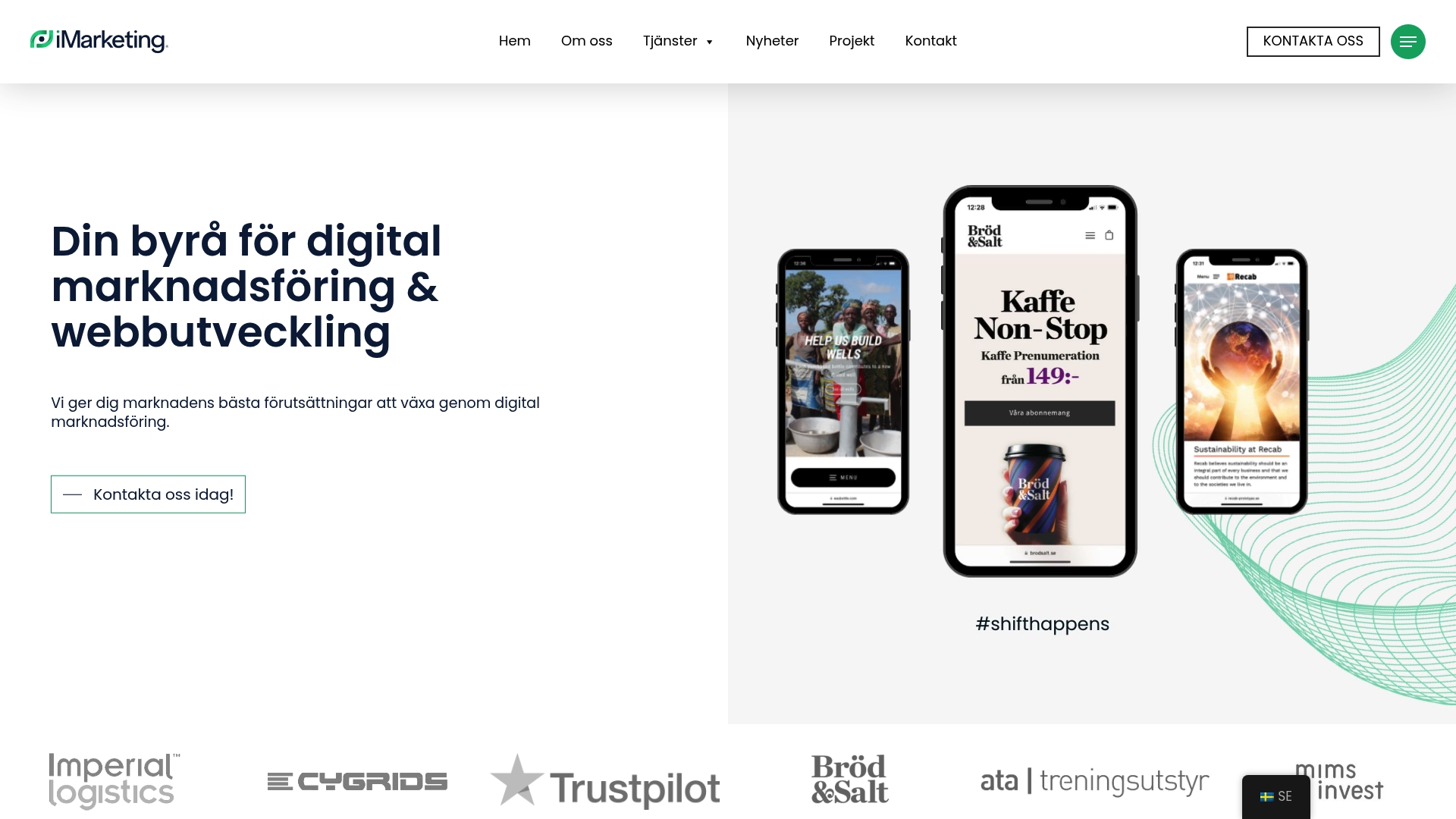Building a social media strategy can feel like a maze. Many people throw themselves into every platform at once, hoping for results, but often miss the mark completely. In fact, Companies that set specific, measurable goals are up to 376 percent more successful with their digital presence. So the unexpected key is not more posts but starting with exactly the right roadmap.
Table of contents
- Step 1: Define your social media goals
- Step 2: Identify your target audience and their needs
- Step 3: Choose the right platforms for your business
- Step 4: Create a content plan and schedule posts
- Step 5: Measure and analyze your results continuously
Quick summary
| Main point | Explanation |
|---|---|
| 1. Define SMART goals | Set specific, measurable, achievable, relevant and time-bound goals to guide your strategy. |
| 2. Identify the target audience carefully | Create detailed customer personas to understand behaviors, needs, and platform choices. |
| 3. Choose few platforms carefully | Focus on 2-3 platforms to create high-quality content, customized for each channel. |
| 4. Create a varied content plan | Plan a mix of engaging and informative content to build audience trust. |
| 5. Measure and analyze continuously | Use data to evaluate results and adjust strategy based on insights and trends. |
Step 1: Define your social media goals
When building an effective step-by-step social media strategy, it's crucial to start with clear and measurable goals. Without clear goals, your efforts will resemble a futile journey without a destination. Goals should be specific, measurable, achievable, relevant and time-bound. – so-called SMART goals.
To define your goals, you first need to do a thorough analysis of your current digital presence. What results have you already achieved? What challenges does your business face online? Maybe you want to increase brand awareness, generate more lead inquiries, or improve customer engagement. Read more about how to optimize your social platforms to understand which specific goals are right for your business.
When formulating your goals, it’s important to be specific. Instead of a vague goal like “increase visibility,” aim for something more specific like “increase Instagram followers by 20% in the next three months” or “generate 50 new leads through LinkedIn advertising each month.” This allows for precise measurement and tracking of your progress.
Each goal should also be linked to a specific timeline and have clear metrics. Use analytics tools built into social media platforms or external tools to track your results. By continuously monitoring and analyzing your results, you can quickly adjust your strategy for the best possible results.
Also, consider differentiating your goals across different social platforms. What works on LinkedIn may not work on Instagram. Each platform has its own unique characteristics and your strategy needs to be tailored accordingly. Prioritize quality over quantity and focus on the goals that can truly move your business forward.
Finally, document your goals in writing. This creates clarity and makes it easier to communicate the strategy with your team. A written plan increases the likelihood of success and gives you a clear roadmap to follow in your digital marketing journey.
Step 2: Identify your target audience and their needs
After defining your goals, the next critical step in your step-by-step social media strategy is to understand exactly who your target audience isWithout deep insight into your potential customers' behaviors, preferences, and needs, your marketing efforts will be ineffective and undirected.
According to research from the Pew Research Center The social media presence of demographic groups varies greatly, underscoring the importance of precise targeting. Start by creating detailed customer personas that go far beyond basic demographic information. You need to understand their digital behaviors, interests, pain points, and dreams.
Conduct extensive research using a variety of methods. Analyze existing customer data, conduct surveys, study comments on your social channels, and use analytics tools to map customer behavior. Create a detailed profile that includes age, profession, interests, digital habits, and specific challenges that your product or service can solve.
Pay special attention to which social platforms your specific audience prefers. Younger people tend to be more active on Instagram and TikTok, while business professionals often prefer LinkedIn. Each platform has its own unique communication styles and expectations. Your content strategy needs to be tailored accordingly for maximum impact.
A powerful approach is to create an empathy map. Visualize your typical customer’s daily challenges, information sources, and decision-making processes. What digital channels do they seek information on? What types of content engage them the most? Video? Infographics? Long articles? This in-depth understanding will guide you in creating extremely relevant and engaging content.
Don’t forget to continually update your audience profile. Digital behaviors change rapidly, and what worked six months ago may no longer be relevant. Set aside time every quarter to revisit and refine your understanding of your audience. This ensures that your social media strategy remains dynamic and responsive.
By the time you complete this step, you should have a crystal clear picture of your ideal customer. Document this insight carefully and make sure your entire team understands and shares this common understanding. This will be the foundation for all future communication and content creation in your social media strategy.
Step 3: Choose the right platforms for your business
Now that you understand your goals and target audience, the next crucial step in your step-by-step social media strategy is to choosing the right digital platformsNot all social media channels are suitable for all businesses, and a scattered and unstructured presence can be more damaging than no presence at all.
According to research from the Pew Research Center, the social media presence of demographic groups varies greatly, making platform selection critical. Start by comparing your previously defined target audience profile with each platform’s user demographics and communication style.
For B2B companies, LinkedIn is often the most effective platform. It’s a great place to build professional networks, share industry insights, and establish yourself as an expert. If your business is visually oriented—for example, in design, cooking, or fashion—Instagram and Pinterest are the best choices. For faster, more conversational communication, Twitter may be a good fit, while Facebook continues to be strong for broader demographics and local marketing.
Quantity is not quality when it comes to social media. Focus on 2-3 platforms where you can create high-quality, engaging content, rather than spreading yourself thinly across many channels. Each platform requires specific content and strategy – what you post on LinkedIn looks different than what you would post on Instagram.
Also analyze where your competitors are and how they communicate. This will give you valuable insights into which platforms work in your industry. Our guide to digital sales tools can provide additional perspectives on effective digital presence.
Some practical factors to consider when choosing platforms include:
- Be your specific target group most active
- Which platforms best suit your content format?
- How much time you can invest in creating and managing content
In conclusion, the choice of platforms is not set in stone.
This table compares common social media platforms by the type of business and content they are best suited for, based on the article's recommendations.
| Platform | Best suited for | Content format |
|---|---|---|
| B2B, experts | Industry insights, networks | |
| Visual companies | Pictures, videos, storytelling | |
| Design, creative | Inspiration, portfolios | |
| Dialogue, quick info | News, short updates | |
| Broad target group, local market | Events, community, ads |
Step 4: Create a content plan and schedule posts
Now that you've chosen your platforms, it's time to create a robust content plan that will drive your step-by-step social media strategy forward. A well-structured content plan is like a GPS for your digital communication – it guides you towards your marketing goals and ensures consistent and targeted presence.
Start by developing a content mix that balances different formats and purposes. 80% of your content should be valuable, informative, or entertaining to your audience, while only 20% should be directly sales-orientedThis approach builds trust and commitment. Our guide to making your audience love your content provides further insights into how to create captivating materials.
Use a digital planning tool or a simple spreadsheet to organize your content calendar. Document the following for each post: date, platform, content type, purpose, and the specific goals you want to achieve. This will help ensure variety and strategic coverage. Plan content at least a month in advance, but be prepared to be flexible and adjust based on current trends or unexpected events.

When creating your content plan, include a good mix of content types. This could include:
- Educational posts that share industry insights
- Behind-the-scenes materials that humanize your brand
- Customer stories and testimonials
- Interactive posts like polls or questions
- Current news related to your industry
Timing is crucial when scheduling posts. Each social platform has different optimal posting times depending on when your specific audience is most active. Use the analytics tools from each platform to identify these golden times. A posting frequency of 3-5 times per week is often optimal for most businesses, but this can vary depending on the industry and platform.
Don't forget the importance of visual continuity. Create a consistent aesthetic by using similar colors, filters, and design elements across your posts. This helps build a recognizable brand that sticks in the minds of your audience.
End each planning session with a reflection period. Analyze which types of content generated the most engagement and adjust your strategy accordingly. A successful social media strategy is never static but continually evolves based on data and insights.

Step 5: Measure and analyze your results continuously
This final crucial phase in your step-by-step social media strategy is all about turning data into actionable insights. Analytics is the heart of all successful digital marketing – without measurement, you are basically blind to your real results.
Our analysis department emphasizes the importance of choosing the right metrics that directly correlate to your original goals. Each platform offers unique analytics capabilities, so familiarize yourself with their specific reporting tools. For Instagram, this is about reach, number of views, and engagement rate. On LinkedIn, you focus on professional reach, number of connections, and content distribution.
Establish a fixed measurement routine, preferably weekly or monthly, where you systematically review the following key figures:
- Engagement rate (likes, comments, shares)
- Reach and views
- Click rate on links
- New followers
- Conversion rate
Use analytical tools like Google Analytics, the platforms' built-in insights, and third-party tools to create a comprehensive picture. Don't just compare raw numbers, analyze the trends behind themA decline in likes can be offset by higher quality interactions like longer comments or more meaningful shares.
Create a simple but robust reporting template to document these results. This will help you see long-term patterns and make data-driven adjustments to your strategy. Don’t be afraid to experiment – if something isn’t working, it’s the data that will help you understand why and how to improve.
An often overlooked aspect is benchmarking. Study not only your own results but also compare them to industry standards and your competitors' performance. This gives you a broader perspective on your digital presence and identifies potential areas for improvement.
In conclusion, continuous analysis is not just a technical exercise but a strategic process.
To help you quickly get an overview of the five main steps in the process, this table summarizes the purpose of each step and key actions.
| Step | Purpose | Key activity |
|---|---|---|
| 1. Define goals | Set clear SMART goals | Formulate specific, measurable goals |
| 2. Identify target audience | Understand customers and their needs | Create customer personas, analyze behaviors |
| 3. Choose platforms | Maximize reach and impact | Choose 2-3 platforms, analyze user demographics |
| 4. Content plan | Create consistent, engaging content | Plan and schedule posts, vary formats |
| 5. Measure & analyze | Optimize and adapt strategy | Follow key metrics, make adjustments based on data |
Take your social media strategy to the next level with concrete expert support
You now have clear steps on how to build a structured social media strategy. But going from plan to actual online growth often requires an extra moment of expert insight and professional support. Are you unsure about how to measure results or adjust your content plan? Do you want to more quickly turn goals into measurable success and create brand engagement that really drives business? Then you face exactly the challenges we at iMarketing.se helps companies solve everyday problems.

Book a free call directly via iMarketing.se and discover how our tailored solutions for social media, digital advertising, and web development can give you a head start. Let’s turn your SMART goals into real digital growth together. Get inspired by our case studies and customer stories and see how other businesses have already grown with us. It’s time to turn your plan into action – contact us today and begin your journey towards a stronger digital presence.
Frequently Asked Questions
What are SMART goals and how should I use them in my social media strategy?
SMART goals are specific, measurable, achievable, relevant, and time-bound. You can use them to clearly define your social media goals, helping you measure progress and adjust strategies.
How can I identify my target audience effectively?
You can identify your target audience by creating detailed customer personas, analyzing customer data, conducting surveys, and studying comments on your social channels to understand their behaviors and needs.
Which platforms should I choose for my social media?
It depends on your target audience and the type of content you create. B2B companies should consider LinkedIn, while visual businesses can benefit from Instagram and Pinterest. Focus on 2-3 platforms that best suit your content.
How often should I post on social media?
A frequency of 3-5 posts per week is often optimal for most businesses, but this can vary depending on your industry and the platform you use. Analyze the best posting times to increase engagement.


